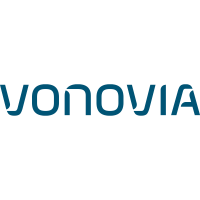|
**Haftungsausschluss: Der Text wurde mit Hilfe einer KI zusammengefasst und übersetzt. Für Aussagen aus dem Originaltext wird keine Haftung übernommen!**
Okay, here’s a 600-word summary of the text, followed by a German translation:
**Summary (600 words)**
This article analyzes Vonovia SE’s (VNA) recent financial performance, highlighting potential concerns despite strong reported earnings. The core argument is that investors should scrutinize Vonovia's reported profits closely due to a reliance on non-operating revenue, unusual items, and a significant tax benefit – all of which may not be sustainable.
The article begins by pointing out that Vonovia’s stock didn’t react strongly to its reported earnings, suggesting investors are aware of potential underlying issues. It focuses on three key areas contributing to the inflated profit figures: non-operating revenue, unusual items, and a substantial tax benefit.
Firstly, Vonovia experienced a massive increase in non-operating revenue, rising from €1.45 billion to €2.48 billion over the past year. The article cautions that this revenue stream, often driven by one-off events, is inherently unstable. If this boost disappears, Vonovia’s overall revenue and profitability will suffer. The key concern is that these non-operating revenues often come without ongoing costs, artificially boosting profits.
Secondly, Vonovia reported a €551 million boost to profit from “unusual items.” While higher profits are generally positive, the article stresses the importance of sustainability. It notes that these “unusual items” are typically one-off occurrences and, therefore, shouldn't be viewed as a consistent driver of earnings.
Thirdly, Vonovia received a €1.8 billion tax benefit. While receiving a tax refund is obviously beneficial, the analysis argues that this benefit is likely a temporary effect. It’s possible this simply reflects the realization of previously recorded tax losses, which is good but doesn't necessarily indicate strong, sustainable earnings power. The potential risk is that once this benefit disappears, Vonovia’s statutory profit will decline.
The article concludes that, based on these factors, the impression is that Vonovia’s underlying earnings potential might be weaker than its reported profit numbers suggest. It advises investors to delve deeper into potential risks facing the company.
The article emphasizes a need for a deeper, more critical examination. It suggests researching metrics like Return on Equity, and provides links to resources for finding companies with high ROE and stocks with substantial insider ownership.
Ultimately, the analysis presents a cautious perspective, urging investors not to be misled by a superficially positive profit picture. The article’s methodology relies on a historical data analysis and analyst forecasts.
**German Translation (approx. 600 words)**
**Zusammenfassung von Vonovia SE (VNA) – Eine kritische Analyse**
Dieser Artikel analysiert die jüngste Finanzperformance von Vonovia SE (VNA) und beleuchtet potenzielle Bedenken, trotz der gemeldeten starken Gewinne. Das Kernargument ist, dass Investoren die gemeldeten Gewinne von Vonovia genau scrutinieren sollten, aufgrund einer Abhängigkeit von nicht-betrieblicher Einnahmen, unüblichen Posten und einem erheblichen Steuervorteil – alle Faktoren, die möglicherweise nicht nachhaltig sind.
Der Artikel beginnt damit, festzustellen, dass Vonovias Aktien nicht stark auf seine gemeldeten Gewinne reagiert haben, was darauf hindeutet, dass Investoren sich der potenziellen zugrunde liegenden Probleme bewusst sind. Er konzentriert sich auf drei Schlüsselfaktoren, die zu den überhöhten Gewinnzahlen beigetragen haben: nicht-betriebliche Einnahmen, unübliche Posten und ein erheblicher Steuervorteil.
Zunächst erlebte Vonovia einen massiven Anstieg der nicht-betrieblichen Einnahmen, der von 1,45 Milliarden Euro auf 2,48 Milliarden Euro im vergangenen Jahr stieg. Der Artikel warnt, dass dieser Einnahmestrom, der oft durch einmalige Ereignisse angetrieben wird, inhärent instabil ist. Wenn dieser Schub verschwindet, wird Vonovias Gesamtumsatz und Rentabilität leiden. Die Hauptsorge besteht darin, dass diese nicht-betrieblichen Einnahmen ohne laufende Kosten kommen und die Gewinne künstlich erhöhen.
Zweitens meldete Vonovia einen Gewinnanstieg von 551 Millionen Euro durch “unübliche Posten”. Während höhere Gewinne grundsätzlich positiv sind, betont der Artikel die Bedeutung der Nachhaltigkeit. Er stellt fest, dass diese “unüblichen Posten” typischerweise einmalige Ereignisse sind und daher nicht als kontinuierlicher Treiber für die Erträge angesehen werden sollten.
Drittens erhielt Vonovia einen Steuervorteil von 1,8 Milliarden Euro. Während die Erhaltung einer Steuererstattung natürlich von Vorteil ist, argumentiert die Analyse, dass dieser Vorteil wahrscheinlich ein vorübergehender Effekt ist. Es ist möglich, dass dies lediglich die Realisierung zuvor erfasster Steuerverluste widerspiegelt, was zwar gut ist, aber nicht unbedingt eine starke, nachhaltige Ertragsstärke anzeigt. Das potenzielle Risiko besteht darin, dass dieser Vorteil verschwindet, und Vonovias stattdurchschnittlicher Gewinn sinkt, mindestens wenn kein starkes Wachstum vorliegt.
Der Artikel schließt mit der Annahme, dass diese Faktoren insgesamt den Eindruck erwecken, dass Vonovias unternehmerpotenzial schwächer ist als seine gemellegten Gewinnzahlen. Er rät Investoren, tiefer in mögliche Risiken für das Unternehmen einzutauchen.
Der Artikel betont die Notwendigkeit einer tieferen, kritischeren Prüfung. Er schlägt vor, Kennzahlen wie die Kapitalrendite (Return on Equity) zu recherchieren, und bietet Links zu Ressourcen zur Suche nach Unternehmen mit hoher Kapitalrendite und Aktien mit bedeutendem Insiderbesitz.
Im Wesentlichen präsentiert die Analyse eine vorsichtige Perspektive und fordert Investoren auf, sich nicht von einem scheinbar positiven Gewinnbild blenden zu lassen. Der Artikel basiert auf einer historischen Datenanalyse und Analystenprognosen.
|
|
**Haftungsausschluss: Der Text wurde mit Hilfe einer KI zusammengefasst und übersetzt. Für Aussagen aus dem Originaltext wird keine Haftung übernommen!**
**Zusammenfassung (ca. 450 Wörter)**
Diese Analyse des jüngsten Ertragsgesprächs von Vonovia SE (VNNVF) zeichnet ein gemischtes Bild von Leistung und Zukunftsaussichten. Das Unternehmen erzielt eine starke finanzielle Leistung, die hauptsächlich auf einen Anstieg des EBITDA um 6,4 % zurückzuführen ist und auf eine robuste operative Basis hindeutet. Vonovia verfolgt selbstbewusst ambitionierte EBITDA-Ziele und prognostiziert ein organisches Mietwachstum von etwa 5 % bis 2028. Ein Schlüsselfaktor für dieses Wachstum ist seine vollständig integrierte Plattform, die die Effizienz in allen Bereichen verbessert. Darüber hinaus ist Vonovia fest entschlossen, Nachhaltigkeit zu fördern, und hat Investitionen von 2 Milliarden Dollar jährlich bis 2028 angekündigt. Konstante hohe Auslastungs- und Eintreibungsraten sorgen weiterhin für stabile Mieteinnahmen.
Dennoch bestehen weiterhin Herausforderungen. Der Immobilien-Transaktionsmarkt liegt unter den Vor-Zinsraten-Niveaus, was die Vermögensverkäufe beeinträchtigt. Steigende Zinsaufwendungen stellen eine erhebliche Bedrohung für die Nettofinanzresultate trotz des positiven Mietwachstums dar. Das Unternehmen hat Schwierigkeiten in seinem Entwicklungssegment aufgrund von früheren Projektveräußerungen und dem Bedarf, seine Projektpipeline wieder aufzubauen. Es besteht auch Unsicherheit hinsichtlich der potenziellen Auswirkungen von angepassten Unternehmenssteuersätzen auf zukünftige Cash-Stehtitel. Politisch steht Vonovia vor potenzieller Kontroversen hinsichtlich von Mierenhöchstzungen im deutschen Markt.
Im Rahmen der Q&A-Sitzung wurden wichtige Bedenken aus der Welt gebracht. Das Unternehmen stellte klar, dass seine überarbeiteten Prognosen für organisches Mietwachstum eine größere Genauigkeit widerspiegeln, wobei die allmähliche Inflation und Mieterhöhungsbeschränkungen berücksichtigt werden. Darüber hinaus werden durch geplante Investitionen weitere Mietwachstum erwartet. Das Unternehmen hat Vermögenswerte zu Buchwert erfolgreich verkauft, trotz eines herausfordernden Transaktionsmarktes, der sich normalisiert, mit kleineren Transaktionen, die zu vor-Zinsraten-Niveaus zurückkehren.
In Bezug auf die steuerlichen Auswirkungen wird der niedrigeren Unternehmenssteuersatz (ab 2028) primär die verzögerte Steuerlast beeinflussen, wobei ein geringer Vorteil langfristig zu erwarten ist. Das Entwicklungssegment soll an Fahrt gewinnen und sowohl die Bruttomargen von 15-20 % als auch die Internal Rate of Return (IRR)-Zahlen über 10 % erreichen. Für neue Projekte in Berlin und Dresden sind Baukosten von 3.600 € pro Quadratmeter vorgesehen, wobei anfängliche Renditen von etwa 5 % erwartet werden, die sich im Laufe der Zeit erhöhen. Vonovia konzentriert sich darauf, das Verhältnis von Zinsdeckung (ICR) zu erhalten und erwägt die Ausgabe von Wandlungsanleihen, um Schulden effizient zu verwalten und eine Dilution zu vermeiden. |




